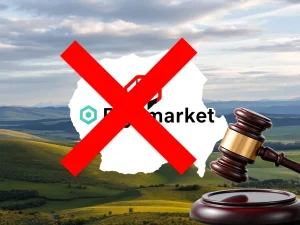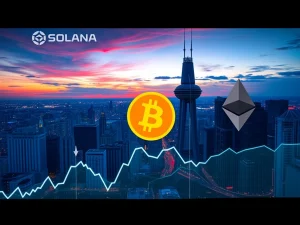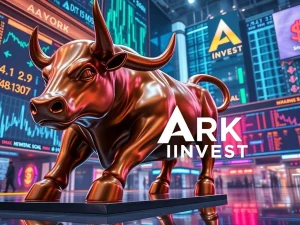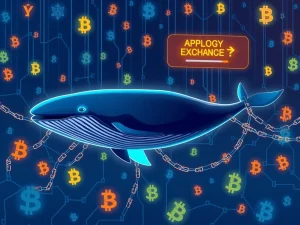XRP Whale Unleashes High-Stakes $16.62M Bet Amidst Liquidation Fears
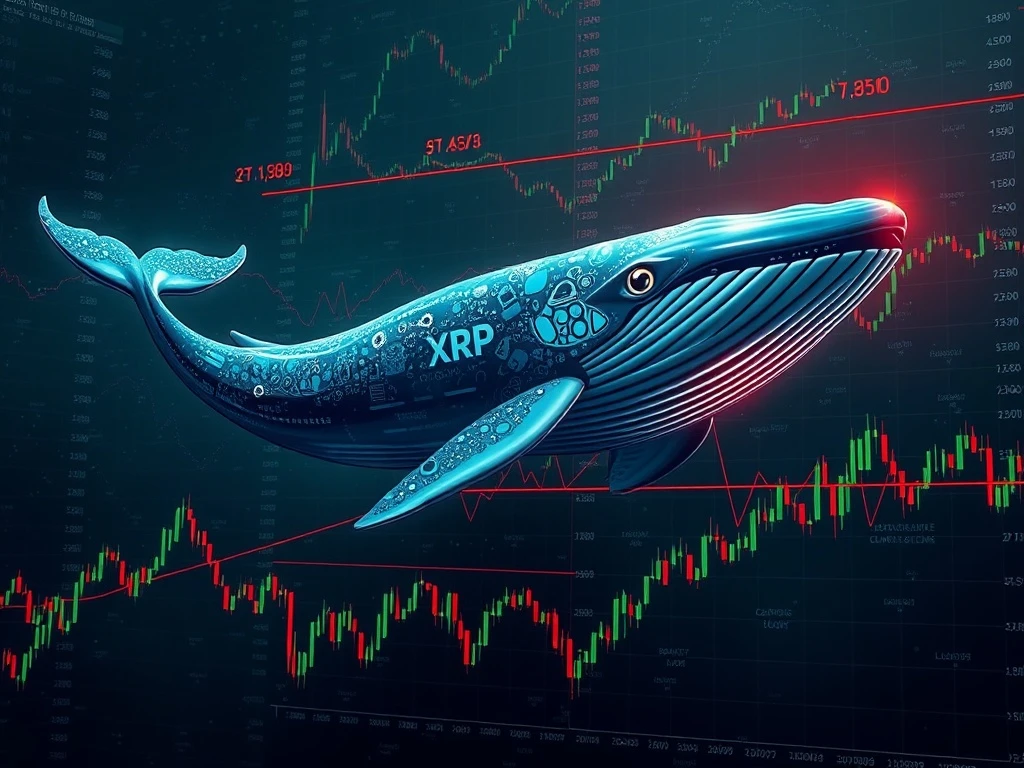
In the unpredictable world of cryptocurrency, where fortunes can be made or lost in the blink of an eye, a dramatic event has captured the attention of the market. An anonymous but incredibly wealthy XRP whale has just made a colossal $16.62 million leveraged bet on XRP, sending ripples through the crypto community. This isn’t just a large investment; it’s a high-stakes gamble with a significant 50% liquidation risk, highlighting the volatile and often precarious nature of digital asset trading. Let’s dive deep into this daring move and what it could mean for the future trajectory of XRP.
The Bold Move: An XRP Whale’s $16.62M Leveraged Position
Blockchain analytics firm COINOTAG recently reported a monumental transaction that has put the crypto world abuzz. A previously dormant crypto wallet sprang to life, executing a massive $16.62 million leveraged long position on XRP. This significant move occurred at an approximate entry price of $3.20, utilizing 2x isolated leverage on the Hyperliquid platform. The sheer scale of this position, one of the largest single XRP bets seen this year, underscores an aggressive optimism despite the token’s inherent volatility and recent price fluctuations.
The whale’s strategy involved three consecutive limit orders, meticulously placed within a tight price range: $3.2029, $3.2051, and $3.2061. These orders collectively amounted to over 5.17 million XRP tokens. This precise execution suggests a calculated attempt to stabilize entry costs while simultaneously aiming to capitalize on short-term market movements. Interestingly, this isn’t the whale’s only venture; the same wallet holds a parallel leveraged position in SOL, with combined unrealized profits already surpassing $96,000. However, such large-scale leveraged trading comes with substantial costs, evidenced by significant funding fees exceeding $21,500, a stark reminder of the dual-edged nature of using borrowed capital in crypto.
Understanding the Peril: The Threat of Crypto Liquidation
While the potential for astronomical gains is tempting, the risks associated with such a leveraged position are equally immense. COINOTAG’s analysis highlights a critical liquidation threshold near $1.64. This means that a nearly 50% drop in XRP’s price from the entry point of $3.20 would trigger a margin call, leading to the automatic closure of the position to prevent further losses to the exchange. This inherent risk is what makes this whale’s bet so captivating and precarious.
How Does Leverage Amplify Risk?
Leverage, in simple terms, allows traders to control a larger position with a relatively small amount of capital. For example, 2x leverage means that for every $1 of your own capital, you can trade $2 worth of the asset. While this amplifies potential profits, it equally amplifies potential losses. If the market moves against your position, your initial capital can be wiped out much faster than in a non-leveraged trade. In this whale’s case, with a 2x leverage, even a moderate downturn could quickly lead to the entire $16.62 million position being liquidated, turning unrealized gains into substantial losses.
The concept of crypto liquidation is central to understanding the danger here. When the value of the collateral (the trader’s initial capital) falls below a certain threshold, the exchange automatically sells off the position to cover the loan and prevent the trader from incurring more debt than they can repay. This automated process can create cascading effects in the market, especially with such large positions, potentially exacerbating downward price pressure.
Market Dynamics and the Critical XRP Price Levels
Currently, the XRP price hovers around $3.21, aligning closely with the whale’s average entry point. This keeps the position ‘in the green’ for now, but the margin is incredibly thin. Technical indicators suggest XRP is trading within the middle band of its Bollinger Bands framework, indicating a neutral zone. This could pivot towards bullish momentum if buyers decisively reinforce the $3.20 level, turning it into a strong support.
However, the broader crypto market remains sensitive to macroeconomic headwinds, introducing an element of uncertainty. The whale’s confidence in XRP stands in stark contrast to this prevailing market sentiment. For every $0.01 drop below $3.20, the position’s risk of liquidation increases incrementally. Leveraged trading platforms enforce strict margin requirements, meaning any significant price depreciation can quickly erode the margin, leading to forced sales.
COINOTAG emphasizes that the whale’s strategy is heavily reliant on XRP maintaining its price above critical support levels. A breakdown below $3.20 could not only erase unrealized gains but also trigger a domino effect of liquidations, potentially intensifying downward pressure on XRP. Conversely, sustained momentum above $3.20 might incentivize other large holders to enter the market, reinforcing a bullish price action narrative. The table below summarizes the key figures of this high-stakes position:
| Metric | Value |
|---|---|
| Position Size | $16.62 Million USD |
| Leverage | 2x Isolated |
| Approx. Entry Price | $3.20 |
| Liquidation Price | ~$1.64 |
| Liquidation Risk | ~50% Price Drop |
| Current Funding Costs | >$21,500 |
What Does This Mean for the Average XRP Investor?
The whale’s entry price has become a focal point for market participants, with the $3.20 level now acting as both a psychological and technical benchmark. If XRP consolidates above this threshold, it could be seen as a validation of the whale’s thesis, potentially attracting additional capital and boosting investor confidence. This could be a significant piece of XRP news that shifts market sentiment.
However, the flip side is equally important to consider. A sustained decline towards the liquidation price of $1.64 would represent a systemic risk for XRP’s short-term stability. Such a scenario could trigger a wave of panic selling, especially if other leveraged positions are also close to their liquidation points. This highlights the interconnectedness of large whale movements and broader market sentiment.
For the average investor, this event serves as a crucial case study in the risks and rewards of the crypto market. While it’s tempting to follow the moves of large players, it’s vital to understand the underlying mechanics and personal risk tolerance. The whale’s deep pockets and ability to absorb significant losses are not typical for most retail traders. This is why understanding the nuances of leveraged trading and the potential for rapid crypto liquidation is paramount.
Staying Informed: The Importance of XRP News and Analytics
In a market as dynamic as cryptocurrency, staying informed is not just beneficial; it’s essential. The ability of blockchain analytics firms like COINOTAG to identify and report on such significant whale movements provides invaluable transparency. This type of XRP news helps market participants gauge sentiment, identify potential support or resistance levels, and understand the broader implications of large capital flows.
This incident also underscores the importance of a robust risk management strategy. For those considering leveraged positions, it’s crucial to:
- Understand the Mechanics: Know exactly how leverage works, how margin is calculated, and what triggers liquidation.
- Set Stop-Loss Orders: Automatically close positions if the price moves against you to limit losses.
- Manage Position Size: Never risk more than you can afford to lose, especially with leverage.
- Monitor Funding Rates: Be aware of the ongoing costs of holding leveraged positions.
- Stay Updated: Keep a close eye on market developments, technical indicators, and major XRP news that could impact price action.
In summary, the anonymous whale’s $16.62 million XRP position is a defining moment in the token’s recent market dynamics. It showcases both the alluring potential for substantial profits and the ever-present, significant risks inherent in leveraged crypto trading. Investors are strongly advised to monitor XRP’s behavior around the pivotal $3.20 entry point and the critical $1.64 liquidation level. These price points will likely dictate not only the fate of this audacious whale’s position but also potentially influence broader market sentiment and the short-term trajectory of XRP itself. The crypto market remains a wild frontier, where calculated risks can lead to immense rewards, but only for those who truly understand the treacherous landscape of leverage and liquidation.
Frequently Asked Questions (FAQs)
1. What is a ‘whale’ in cryptocurrency trading?
A ‘whale’ refers to an individual or entity that holds a very large amount of a particular cryptocurrency. Their significant holdings mean their trades (buying or selling) can have a substantial impact on the market price and liquidity of that asset. In this case, the XRP whale is making a large enough bet to influence market sentiment and potentially price action.
2. How does 2x isolated leverage work, and why is it risky?
2x isolated leverage means that for every dollar of your own capital (margin) you put up, you can trade with two dollars worth of the asset. ‘Isolated’ means only the margin allocated to that specific position is at risk of liquidation, not your entire portfolio. It’s risky because it amplifies both gains and losses. If the price moves against you, your initial margin is depleted twice as fast, leading to quicker crypto liquidation compared to non-leveraged trading.
3. What is the significance of the $1.64 liquidation price for XRP?
The $1.64 liquidation price is the point at which the whale’s leveraged XRP position would be automatically closed by the exchange. This would occur if XRP’s price drops by approximately 50% from the whale’s entry point of $3.20. Reaching this level would result in a complete loss of the capital allocated to this specific trade for the whale, and could also trigger broader market panic if other large positions are similarly affected, leading to further downward pressure on the XRP price.
4. How do whale trades impact the broader XRP market?
Large whale trades, especially highly leveraged ones, can significantly impact market sentiment and price. If the whale’s position succeeds, it can validate a bullish thesis, encouraging other investors to buy. Conversely, if the position faces liquidation, it can create a ripple effect, leading to increased selling pressure and potentially a market downturn. These events are often closely watched in XRP news as indicators of market direction.
5. What are funding costs in leveraged trading?
Funding costs (or funding rates) are periodic payments exchanged between traders holding long and short positions in perpetual futures contracts. They ensure the contract price stays close to the spot price. If the funding rate is positive, longs pay shorts; if negative, shorts pay longs. For this XRP whale, significant funding costs exceeding $21,500 indicate an ongoing expense for maintaining their leveraged long position, regardless of price movement, adding another layer of risk to their leveraged trading strategy.
6. Should average investors try to mimic whale strategies?
Generally, no. While whale moves can offer insights, average investors typically lack the capital, risk tolerance, and sophisticated trading tools that whales possess. Mimicking highly leveraged positions like this one without a deep understanding of market mechanics and robust risk management can lead to substantial losses. It’s crucial for retail investors to conduct their own research, manage risk carefully, and only invest what they can afford to lose, especially in volatile assets like XRP.



